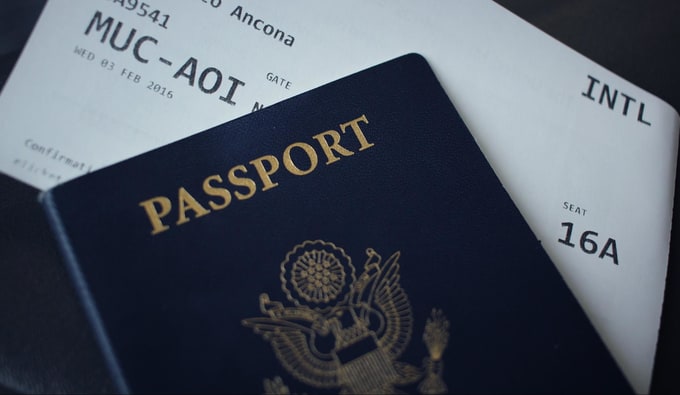Yes, you can apply for a Philippines visa online. The country provides an online application system where you can submit required documents, pay fees, and receive your eVisa upon approval.
Introduction
In the realm of travel, we often find our hearts longing for new experiences and landscapes. Among the numerous destinations around the world, the Philippines shines uniquely, offering a rich tapestry of cultures, histories, and natural beauty. In this article, we will guide you through a process that’s crucial for your journey: applying for a Philippines visa online.
Types of Visas for the Philippines
| Visa Type | Purpose | Typical Fees |
|---|---|---|
| Tourist Visa | For leisure travel, sightseeing, and casual visits to friends or relatives. | $30 – $60 |
| Business Visa | For engaging in business meetings, conferences, or any business-related activities, but not for employment. | $40 – $90 |
| Student Visa | For foreign students who wish to pursue educational courses in the Philippines. | $50 – $100 |
| Employment Visa | For foreign nationals who have obtained employment in the Philippines. | $100 – $200 |
| Transit Visa | For those passing through the Philippines en route to another destination. | $20 – $40 |
| Spousal Visa | For spouses of Filipino citizens or residents. | $50 – $100 |
| Retirement Visa | For foreign nationals who wish to retire in the Philippines. | $50 – $100 |
The Online Visa Application Process
In an era of digital convenience, the Philippines has made significant strides in making travel to the country easier. One of these efforts is the online visa application process. This modern, streamlined system allows applicants from various countries to apply for a visa from the comfort of their homes. In the upcoming sections, we will detail the eligibility criteria for online applications and provide a step-by-step guide to complete the process.
The Eligibility Criteria for Applying Online
Before embarking on the online application process, understanding the eligibility criteria is crucial. Here are the typical conditions you need to meet:
- Passport Validity: Your passport should have at least six months’ validity from the date of your intended travel to the Philippines.
- Proof of Onward Travel: You must have a return ticket or a ticket for onward travel to another country.
- Financial Means: You need to show proof of sufficient funds to cover your stay in the Philippines.
- Purpose of Visit: Your purpose of visit should be tourism, business, or transiting. Other purposes may require a different type of visa or application process.
Please note that these are general criteria. The specific requirements may vary based on your country of residence and the specific type of visa you’re applying for. Always check the most updated information from the official Philippines consulate or embassy website in your country.
Step-by-Step Guide to Applying for a Philippines Visa Online
Once you understand your eligibility, it’s time to proceed with the application. Here’s a detailed guide to help you navigate the process:
Step 1: Gather Necessary Documents
Compile all the required documents as per your visa type and eligibility criteria. This usually includes your valid passport, proof of onward travel, financial statements, passport-sized photos, and any other supporting documents.
Step 2: Visit the Official eVisa Website
Navigate to the official Philippines eVisa portal. Make sure you’re on the correct site to avoid scams or false information.
Step 3: Fill Out the Application Form
Complete the online application form with accurate information as per your documents. Any discrepancy can lead to application rejection.
Step 4: Pay the Visa Application Fee
Pay the visa application fee through the available online payment options. Keep a record of the transaction for future reference.
Step 5: Submit Your Application
After checking all your details and making the payment, submit your application. You will receive a confirmation email upon successful submission.
Step 6: Wait for the Visa Processing
Now, all you have to do is wait. The processing time can vary. Once your visa is approved, you will receive it via email.
This step-by-step guide aims to simplify the process of applying for a Philippines visa online. However, always ensure to verify the details from the official sources as procedures and requirements may change over time.
Advantages and Disadvantages of Online Visa Application
| Pros of Online Application | Cons of Online Application |
| 1. Convenience: Apply from anywhere at any time. | 1. Technical Issues: Website or server down times can affect the application process. |
| 2. Speed: Faster processing times as compared to traditional methods. | 2. Limited Human Interaction: Difficulties might arise in getting real-time clarifications. |
| 3. Electronic Record: Easy to track application status and maintain digital records. | 3. Security Concerns: Possible risks of sensitive information being hacked. |
| 4. No Paperwork: No need to fill out paper forms. | 4. No Paper Trails: Some people may feel more secure with physical document trails. |
| 5. Access to Updates: Easy to receive updates about application status or changes in the visa policy. | 5. Difficult for the Less Tech-Savvy: Those unfamiliar with online systems might find the process challenging. |
Processing Time and Fees
One of the most common concerns for those planning a trip to the Philippines revolves around the timeline and cost associated with visa applications. To ease these worries, we are providing an overview of the average processing time for online visa applications and an insight into the fees involved.
Average Processing Time for Online Visa Applications
The processing time for a Philippines online visa application typically varies based on the type of visa and the applicant’s nationality. However, in most cases, you can expect a response within 3 to 5 business days. During peak travel seasons or due to unexpected issues, the processing time may extend slightly. Therefore, it’s always wise to apply for a visa well in advance of your intended travel date.
Fees Associated with Online Visa Application
The visa application fee also varies depending on the type of visa and the applicant’s nationality. As a general guide, the fees can range from $20 to $200. It’s important to remember that this fee is non-refundable, irrespective of whether the visa gets approved or not. Apart from this, there may be additional service charges for online applications. For the most accurate information on fees, always refer to the official Philippines eVisa portal.
What to Do After the Online Application
Once you’ve submitted your online visa application, a sense of accomplishment often sets in. But what comes next? In this section, we’ll guide you through the steps after the online application, whether you’re preparing to receive your visa or grappling with the possibility of a rejection.
Receiving Your Visa
Upon successful processing of your visa application, you will receive your visa via email. It is usually an eVisa, which means you won’t receive a physical document but a digital one. It’s recommended to print out a copy of this eVisa and keep it with your passport during your travels. You might need to present this document at immigration checkpoints when you enter the Philippines.

What to Do in Case of Visa Rejection
Visa rejection can be disappointing, but it’s not the end of the road. It’s essential to understand the reasons behind the rejection, which are typically provided in the rejection letter. Common reasons include incomplete applications, insufficient supporting documents, or lack of proof of financial means.
If your visa gets rejected, you can:
- Review the Rejection Reasons: Understand the reasons behind the rejection and figure out what was missing or incorrect in your application.
- Correct the Issues: Based on the rejection reasons, correct the issues in your application. This could mean providing additional documents, rectifying mistakes, or clarifying misinterpretations.
- Reapply: Once you’ve addressed the issues, you can reapply for the visa. Make sure to take into account any wait times before you can reapply, which will be specified in the rejection letter.
